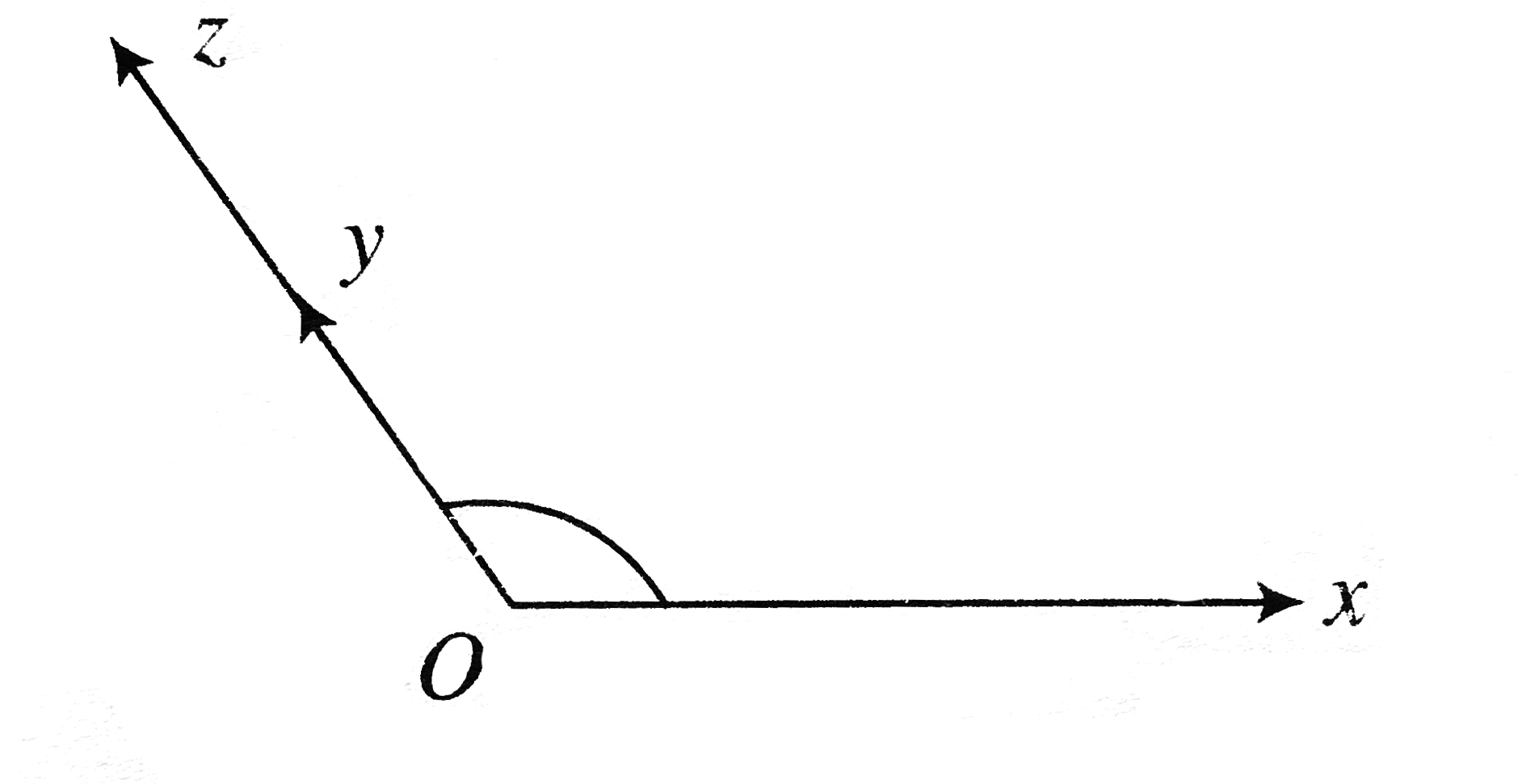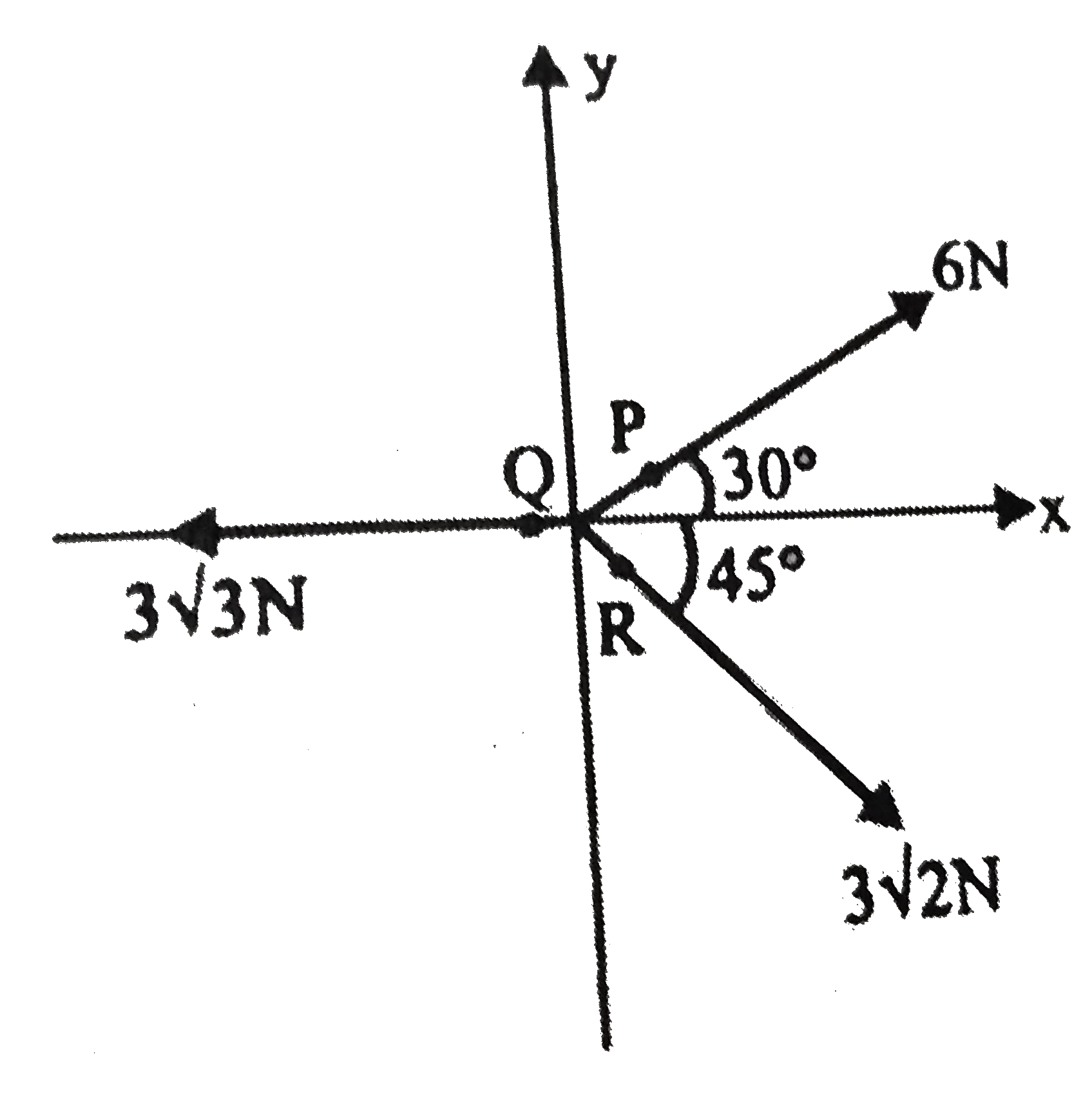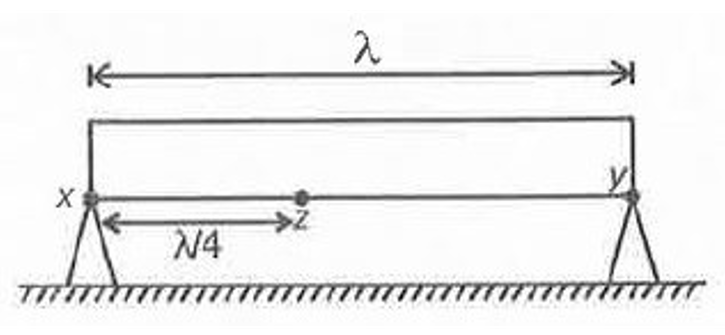Forces X,Y and Z have magnitudes 10N, 5(√3−1)N and 5(√3+1)N, respectively. The forces Y and Z act in the same direction as shown in figure. The resultant of X and Y and the resultant of X and Z have the same magnitudes. Find θ, the angle between X and Y.

150∘
135∘
120∘
105∘
The correct Answer is:A
Resultant of →X+→Y=→X+→Z
(10)2+(5√3−1)2+2.10.(5√3−1)cosθ
=(10)2+(5√3+1)2+2.10.(2√3+1)cosθ
or
(5√3−1)2−(5√3+1)2
=2.10cosθ[(5√3+1)−(5√3−1)](2.5.√3)(−2)=2.10cosθ[2]
−510√3=cosθ=−√32
=cosθ⇒θ=150∘
Topper's Solved these Questions
- BOOK - A2ZCHAPTER - VECTORSEXERCISE - Assertion Reasoning17videos
VECTORS
- BOOK - A2ZCHAPTER - VECTORSEXERCISE - NEET Questions12videos
VECTORS
- BOOK - A2ZCHAPTER - VECTORSEXERCISE - Cross Product25videos
VECTORS
- BOOK - A2ZCHAPTER - UNIT, DIMENSION AND ERROR ANALYSISEXERCISE - Chapter Test28videos
UNIT, DIMENSION AND ERROR ANALYSIS
- BOOK - A2ZCHAPTER - WAVES AND ACOUSTICSEXERCISE - Chapter Test30videos
WAVES AND ACOUSTICS
Similar Questions
Knowledge Check
- Question 1 - Select One
Two forces of magnitude 1 N and 13 N resultant of magnitude 6√5N, then that is the angle between two forces.
Acos−1.113Bcos−1.513Ccos−1.135Dcos−1.137 - Question 2 - Select One
The two forces 2√2N and xN are acting at a point their resultant is perpendicular to ˆxN and having magnitude of √6N.The angle between the two forces and magnitude of x are.
Aθ=120∘,X=√2NBθ=30∘,X=√2NCθ=150∘,X=√3NDθ=150∘,X=√2N - Question 3 - Select One
If two forces of 5 N each are acting along X and Y axes, then the magnitude and direction of resultant is
A5√2,π/3B5√2,π/4C−5√2,π/3D−5√2,π/4
Two horizontal forces of magnitudes of 10N and PN act on a particle. The force of magnitude 10N acts due west and the force of magnitude PN acts on a bearing of 30∘ east of north as shown in (figure) The resultant of these two force acts due north. Find the magnitude of the resultant.
 View Solution
View SolutionThe magnitudes of two forces X and Y are in the ratio 2:3 . If the resultant of two forces is 25N and angle between them 60∘, find the magnitude of each force close to one place of decimal .
View SolutionThree ant P,Q and R are pulling a grain with forces of magnitude 6N,3√3N and 3√2N as shown in the figure. Find the magnitude of resultant force (in N ) acting on the grain .
 View Solution
View SolutionA uniform plank is supported by two equal 120 N forces at x and y as shown in figure. If the support at x is moved to z, then the supporting forces at y and z are
 View Solution
View SolutionFind the angle between the plane: x−y+z=5 and x+2y+z=9
View Solution

